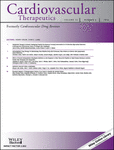Antiplatelet Therapy in Patients Undergoing Primary Percutaneous Coronary Intervention for ST-Elevation Myocardial Infarction: A Retrospective Observational Study of Prasugrel and Clopidogrel
Summary
Background
Primary percutaneous coronary intervention (PPCI) for ST-segment elevation myocardial infarction (STEMI) is a therapeutic success when supported by dual antiplatelet therapy. Prasugrel has been introduced as a potential alternative to clopidogrel alongside aspirin. We aimed to assess prasugrel versus clopidogrel mortality outcomes in patients admitted with STEMI undergoing PPCI.
Methods
Retrospective analysis of prospectively collected data of 1688 consecutive STEMI patients undergoing PPCI at a regional tertiary centre. Patients with age ≥75 years, weight<60 kg or history of cerebrovascular accident or TIA's, active bleeding or known hepatic impairment were excluded. All patients from March 2008 to 16 December 2009 belong to the Clopidogrel group and from 17 December 2009 to June 2011 belong to the Prasugrel group.
Results
A total of 866 patients were in the Clopidogrel group and 822 patients in the prasugrel group. In-hospital mortality was 1.7% in the Clopidogrel and 1.5% in Prasugrel group (P = 0.40). 30-day postdischarge mortality was 2.4% and 1.8% (P = 0.25) in the Clopidogrel and Prasugrel group, respectively. One-year mortality rate was recorded in 62 patients (3.7%): 39 (4.5%) in the Clopidogrel group and 23 (2.8%) in the prasugrel group. In the Cox proportional hazard model, the adjusted hazard ratio for all-cause mortality for the prasugrel group was 0.47 (95% CI: 0.253–0.881; P = 0.018). Independent predictors of one-year mortality postdischarge were age, admission creatinine and haemoglobin, admission heart rate, total ischaemic time, the presence of multivessel coronary artery disease, previous MI and post-PCI TIMI flow.
Conclusion
In PPCI-treated STEMI patients, prasugrel is associated with a significant reduction in one-year mortality compared with clopidogrel.




